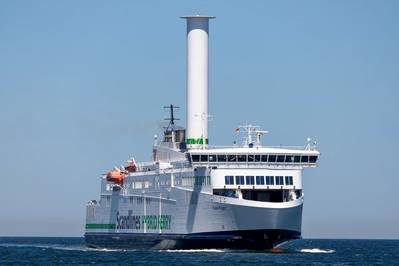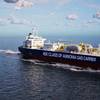Maritime Stakeholders Call for Action to Remove Barriers to Wind Propulsion
As the maritime industry searches for technologies and energy sources that can deliver on upcoming decarbonization regulations from the IMO and EU and ultimately delivering zero-emissions shipping, the development and deployment of wind propulsion technologies have been making headlines that speak to a growing momentum. Today, sees the release of the report from a group of more than 40 experts and stakeholders that came together for a workshop to identify the strategy priorities for wind propulsion development in the near future, calling on industry stakeholders, technology providers, policy makers, finance and the International Windship Association to work more closely together to reduce or eliminate the remaining barriers that continue to challenge the scaling of wind propulsion in commercial shipping.
“This summary report is a call-to-action to facilitate the uptake of wind propulsion systems and will form the basis of the International Working Group that we will establish before the end of the year as part of the ‘Decade of Wind Propulsion’ announced earlier this year,” said the workshop convener and moderator, Gavin Allwright, Secretary General of the International Windship. “All participants agreed that significant progress has been made, but there is still significant work required to secure trusted, third party verified information on the performance and operations for the market, access to sufficient capital for Wind Propulsion Technologies (WPT) development, especially full-scale demonstrators and the continued need to introduce and strengthen market and policy incentives to decarbonize vessels.”
The workshop and subsequent report used the 2016 EU-commissioned ‘study on the analysis of market potentials and market barriers for wind propulsion technologies for ships’ as the baseline to access progress and help to highlight areas for further development. The original report’s headline findings were; “Should some WPTs reach marketability in 2020, the max. market potential for bulk carriers, tankers and container vessels is estimated to be 3,700-10,700 installed systems until 2030, including both retrofits and installations on newbuilds, depending on the fuel price, speed of the vessels, and discount rate applied [CO2 savings of 3.5-7.5 Mt CO2 in 2030 and 6,500-8,000 direct & 8,500-10,000 indirect jobs generated].”
Acknowledging that some WPTs have already reached that milestone, and that the major classification societies have issued comprehensive guidelines for the installation of wind-assist propulsion systems, it would seem the drive to standardize assessment and application is well underway and the EU forecast seems to be on track, with ten demonstrator vessels in operation by the end of 2020 and likely to double by the end of this year. Workshop participants however called on all key stakeholders to work more collaboratively on reducing or removing the final barriers holding back a technology segment that is available for scaling today. Cathal Leigh-Doyle, Senior Associate, Stephenson Harwood LLP, said, "The working group covered numerous important issues and in particular had extremely useful discussions about methods to increase wind propulsion technology information being shared across the sector between designers, fabricators and potential end users.”
From a shipowners and business perspective, Hélène Smidt, Maritime Innovation lead at the Royal Belgian Shipowners' Association, added, “In order to fasten the uptake of any energy efficiency measure, commercial agreements need to be adjusted to reflect a more long-term agreement between shipowner/operator and charterer. In this way both parties can benefit from the fuel reductions realized by the investments.”















